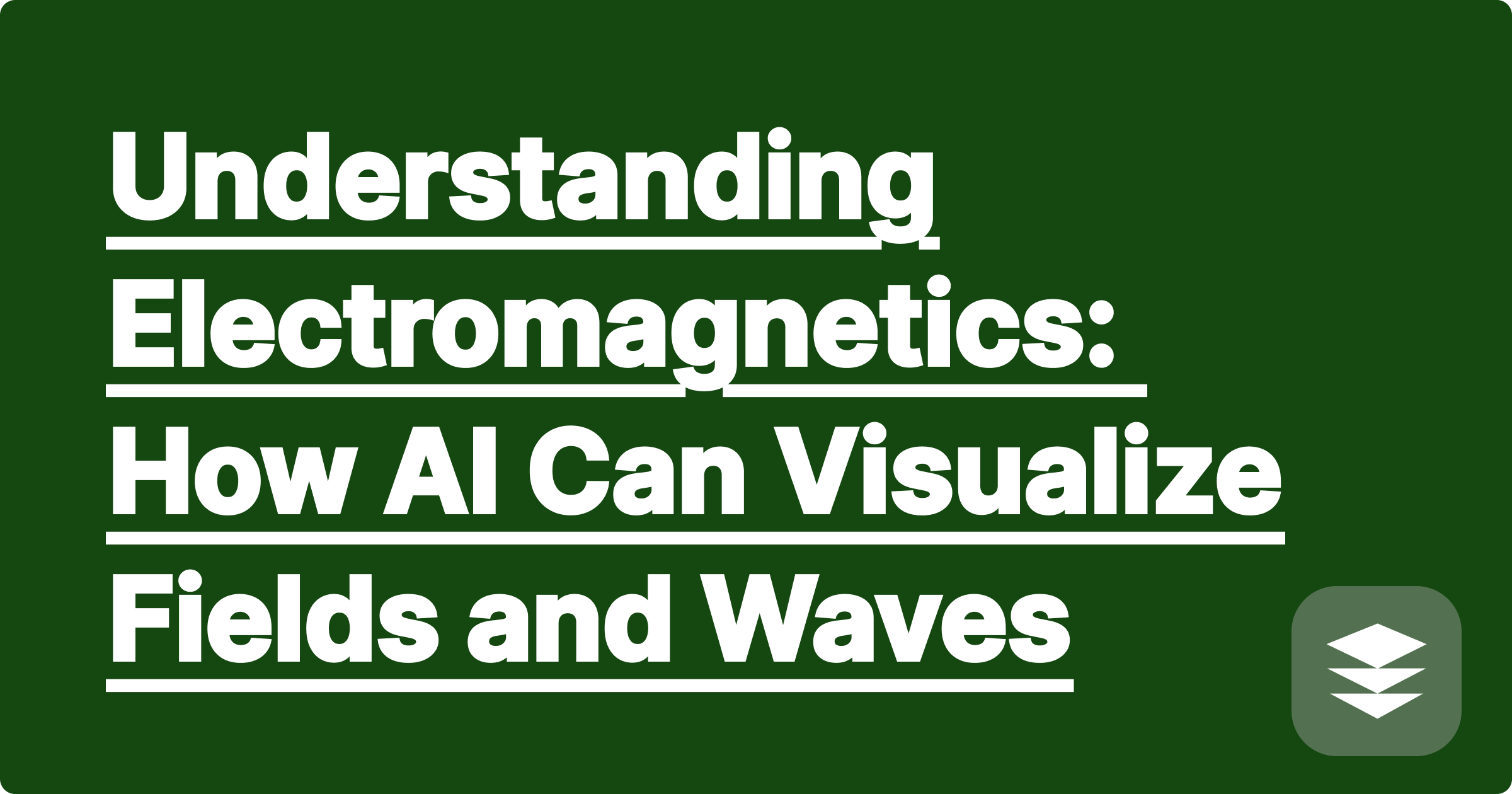
타이틀 : Understanding Electromagnetics: How AI Can Visualize Fields and Waves
메타디스크립션 : Struggling with E&M? Get help from an electromagnetics tutor AI that visualizes fields, waves, and explains Maxwell's equations in a way you can actually understand.
Electromagnetics (E&M) is one of the most challenging and abstract subjects in the entire physics and engineering curriculum. You're dealing with invisible forces—electric and magnetic fields—that permeate all of space. You're asked to understand and apply Maxwell's equations, a set of elegant but conceptually dense equations that describe how these fields behave and interact.
The biggest hurdle for students is that you can't see what you're studying. You can't hold an electric field in your hand. You can't see a plane wave propagating through space. This is why E&M often feels like a pure-math exercise, disconnected from physical reality.
But what if you could see it? What if you could have a personal electromagnetics tutor that could generate visualizations of these invisible phenomena? With modern AI, you can. By translating the complex math into intuitive graphics, AI can finally help you build a real, physical intuition for the world of fields and waves.
Why is E&M so hard to grasp?
Textbook diagrams are static and limited. You need a dynamic tool to truly explore these concepts.
An AI tool like GPAI Solver can act as your personal visualization engine, taking an equation or a scenario and turning it into a clear, insightful graphic.
Instead of just imagining field lines, you can see them.
[Image: A clean 3D plot generated by GPAI Solver showing a straight line representing a wire, with concentric circles and arrows indicating the direction of the magnetic field around it. Alt-text: An AI electromagnetics tutor visualizing the magnetic field around a current-carrying wire.]
Maxwell's equations are the foundation of all classical electromagnetism. But what do they mean?
This is one of the most powerful applications.
"I struggled with Maxwell's equations for weeks. I just couldn't picture what 'curl' meant. I asked GPAI to visualize the curl of a magnetic field, and it showed me this little rotating paddlewheel in the field. It instantly clicked. That one picture was worth more than five lectures."
By using AI as your personal visualization tool, you are not just solving homework problems. You are building a deep, physical intuition that will last your entire career. You start to think in terms of fields and waves, which is the hallmark of a true engineer or physicist.
A: It uses a combination of its physics knowledge base and powerful plotting libraries. The AI first understands the physical principle (e.g., the Biot-Savart law for a wire). Then, it calculates the field vectors at many points in space and passes this data to a plotting engine (like Plotly.js or Matplotlib) to render the final, interactive graphic.
A: Yes. It's the perfect tool. You can input a specific problem (e.g., "Find the electric field inside a uniformly charged sphere using Gauss's Law") and the AI will not only show you the step-by-step integration but can also be prompted to visualize the resulting field.
A: No. Professional simulation tools are designed for complex, high-fidelity engineering design. An AI tutor like GPAI is a learning tool. It's designed to visualize the idealized, fundamental concepts from your textbook in a clean and simple way, helping you build the foundational knowledge needed to eventually use those professional tools.
Electromagnetics doesn't have to be a source of confusion. By embracing AI as your personal visualization lab, you can pull these abstract concepts out of the pages of your textbook and see them in action. This is the key to transforming E&M from a difficult requirement into a subject you genuinely understand and appreciate.
Ready to finally visualize the world of E&M?
[Try GPAI Solver today. Get help from an AI electromagnetics tutor that can explain concepts and visualize fields and waves. Sign up now for 100 free credits.]
Circuit Analysis Made Simple: An AI Assistant for Nodal and Mesh Analysis
Understanding Electromagnetics: How AI Can Visualize Fields and Waves
Digital Logic Design: From Truth Tables to Karnaugh Maps with AI
Signals and Systems: How AI Can Help You with Fourier and Laplace Transforms
Your Guide to Semiconductor Physics: How AI Simplifies Band Diagrams
How to Write Verilog or VHDL Code Faster with an AI Assistant
Mastering Microelectronics: An AI Tool for Amplifier and Filter Design
The ECE Student's Ultimate Cheatsheet: Combining Circuits, Signals, and Code
Can AI Help Me with My PSpice / LTspice Simulation?
How to Prepare for the FE Electrical and Computer Exam with AI